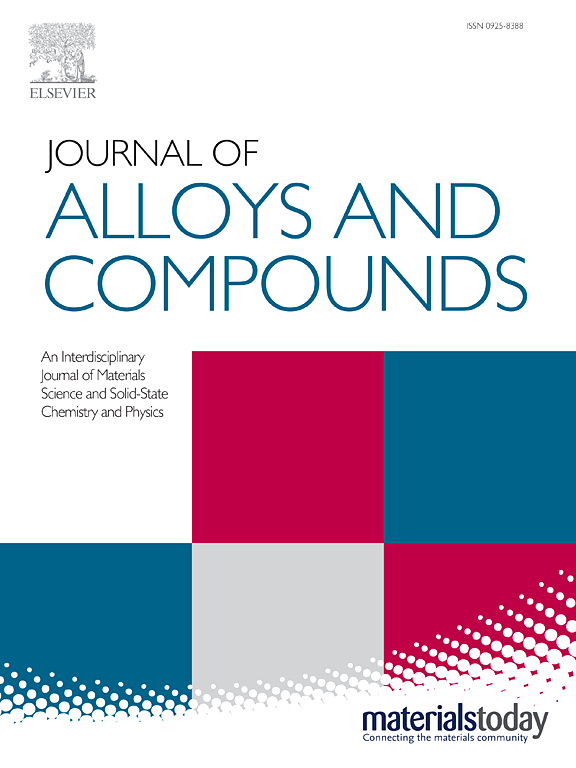Developing a heterostructured SiCp/AZ91 composite with enhanced mechanical properties by multipass equal channel angular pressing and single-pass high-reduction rolling
IF 5.8
2区 材料科学
Q2 CHEMISTRY, PHYSICAL
引用次数: 0
Abstract
In this study, multipass equal channel angular pressing (ECAP) and single-pass high-reduction rolling (SPHRR) were used to create a heterostructured SiC particle (SiCp) reinforced AZ91 magnesium matrix (SiCp/AZ91) composite. The microstructure evolution and mechanical properties of the composite were then investigated. Results showed that the SiCp particles exhibited excellent dispersion, and a heterogeneous microstructure comprising minute β-Al12Mg17 phases and a high proportion of fine grains was developed in the matrix of the composite after ECAP and SPHRR. The area fraction of fine grains (<5 μm) was determined to be 68.4%, and the area fraction of coarse grains (≥5 μm) accounted for 31.6%. A significant increase was observed in the ultimate tensile strength, reaching 426 MPa, and the yield tensile strength, reaching 372 MPa. Additionally, a ductility of 6.8% was achieved in the heterostructured composite. The heterogeneous grain structure was generated under the coeffect of micro SiCp particles and dispersed β-Mg17Al12 precipitates, resulting in inhomogeneous recrystallization and impeding the grain growth. The results of this study offered a new method to develop a heterogeneous grain structure that optimized the ductility and strength of magnesium matrix composites.

求助全文
约1分钟内获得全文
求助全文
来源期刊

Journal of Alloys and Compounds
工程技术-材料科学:综合
CiteScore
11.10
自引率
14.50%
发文量
5146
审稿时长
67 days
期刊介绍:
The Journal of Alloys and Compounds is intended to serve as an international medium for the publication of work on solid materials comprising compounds as well as alloys. Its great strength lies in the diversity of discipline which it encompasses, drawing together results from materials science, solid-state chemistry and physics.
 求助内容:
求助内容: 应助结果提醒方式:
应助结果提醒方式:


